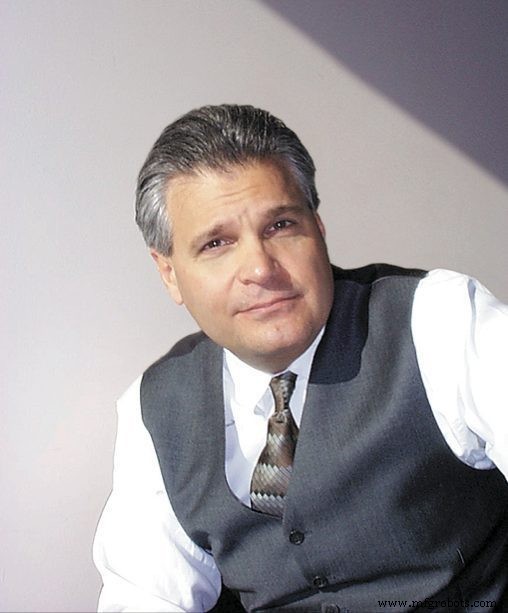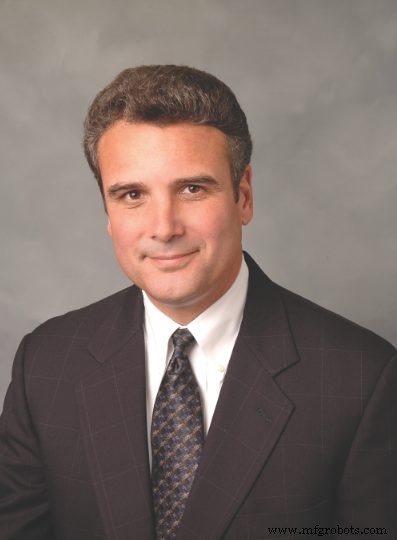企业物流战略:23 位专家分享如何制定成功的物流战略(或改进现有物流战略)的技巧
对于从事向客户提供各种产品和服务业务的任何公司而言,实施有助于始终将服务水平保持在最高水平的物流战略对该业务的健康至关重要企业组织的其他领域可能会发生什么变化。对于结构更复杂、供应链可能非常不稳定或波动很大、或者有特定产品线、特定国家或特定客户要迎合的公司来说,这是一个更大的要求。
但究竟是什么物流专业人士应该专注于提高他们的业务效率吗?您是否应该花更多时间确定结构改进以提高生产速度?您是否应该主要关注最小化物流成本?或者您是否应该首先将更多精力用于确定最佳的高层组织目标,并确定您的整体物流战略是否有助于实现该目标?哪种策略适合您的业务以及在什么情况下?
为了帮助您评估您的选择,甚至提出一些新的想法,我们向物流战略专家小组提出了以下问题:
“对于希望创建或改进其物流战略以使其更有效的新企业(甚至是已建立的组织),您的首要建议或想法是什么?”
我们已收集并汇编了他们的专家建议,并将其编入此有效物流管理策略的综合指南。我们希望它能帮助您最大限度地利用贵公司的物流资源,并最终将您的物流战略提升到一个新的水平。

会见我们的物流战略专家小组:
|
|
|
肖恩·凯斯莫尔
 Shawn Casemore 是 Casemore and Co, Inc. 的创始人兼总裁。Shawn 花了近二十年的时间领导、管理和激励各行各业的团队。他曾与数十家充满活力和多元化的组织合作,包括 Magna International、Arvin Meritor 和 Bruce Power LP。 Shawn 被公认为卓越运营领域的思想领袖,他的观点经常发表在行业出版物上,包括《环球邮报》、《CFO 杂志》、《今日企业应用》、《采购 B2B》等。在过去的两年里,Shawn 还是亨伯学院技术与高级学习学院的客座教员。
Shawn Casemore 是 Casemore and Co, Inc. 的创始人兼总裁。Shawn 花了近二十年的时间领导、管理和激励各行各业的团队。他曾与数十家充满活力和多元化的组织合作,包括 Magna International、Arvin Meritor 和 Bruce Power LP。 Shawn 被公认为卓越运营领域的思想领袖,他的观点经常发表在行业出版物上,包括《环球邮报》、《CFO 杂志》、《今日企业应用》、《采购 B2B》等。在过去的两年里,Shawn 还是亨伯学院技术与高级学习学院的客座教员。
我最重要的物流策略提示是……
利用您的预测数量来降低价格。
我曾与众多组织合作,在业务启动期间开发物流网络(FTL、LTL、快递)。当您没有可依赖的历史数量时,寻找能够以具有竞争力的价格提供所需服务水平的供应商是一项挑战。这是预测的数量变得至关重要的时候。您第一年预计的 LTL 或快递物流量是多少?正确定位这一点可以显着降低运费,从而有助于提高利润和竞争优势。
我帮助一个非常小的瓷砖经销商协商他们的快递费率。我们最终使用了排名靠前的国际快递,并享受了很大的折扣。我的客户很高兴,但直到有一天他们的供应商(一家较大的国家瓷砖制造商)建议他们使用自己的帐户(使用相同的快递员)运送时,才能够验证折扣率。我将他们的费率与我客户的协商费率进行了比较,发现有 20% 的差异(有利于我的客户)。
在物流网络战略中,确定合作伙伴完全是关于杠杆,无论是真实的还是预测的。
基思·比昂多
 作为Inbound Logistics Magazine的出版商 – 自 1981 年以来,服务于全球商业物流和供应链经理的信息需求的多媒体出版物 – Keith Biondo 被认为是供应链的远见者。在他职业生涯的早期,Biondo 认识到帮助美国制造商更好地匹配供需的重要性,他对这个想法的热情推动了 Inbound Logistics 的许多成就。在 Biondo 的领导下,入站物流 帮助发展第三方物流部门,并向托运人传授评估其 3PL 供应商的重要性。他还倡导将物流技术应用于供应链管理的各个方面,从最大的 ERP 系统到最小的 SaaS 解决方案。 Biondo 目前担任美国运输和物流协会的董事会顾问。 Biondo 拥有纽约圣约翰大学的历史和英语学士学位。
作为Inbound Logistics Magazine的出版商 – 自 1981 年以来,服务于全球商业物流和供应链经理的信息需求的多媒体出版物 – Keith Biondo 被认为是供应链的远见者。在他职业生涯的早期,Biondo 认识到帮助美国制造商更好地匹配供需的重要性,他对这个想法的热情推动了 Inbound Logistics 的许多成就。在 Biondo 的领导下,入站物流 帮助发展第三方物流部门,并向托运人传授评估其 3PL 供应商的重要性。他还倡导将物流技术应用于供应链管理的各个方面,从最大的 ERP 系统到最小的 SaaS 解决方案。 Biondo 目前担任美国运输和物流协会的董事会顾问。 Biondo 拥有纽约圣约翰大学的历史和英语学士学位。
谈到有效的物流战略……
如果您还没有这样做,我的一个建议是开始实践以需求为导向的物流。
更好地匹配您的产品的需求与您的供应的重要性远不止减少您的运输支出。
当一家公司开始实施入站物流或需求驱动型物流,运输成本会降低,但用信息替代库存以及为客户提供更好的客户服务所节省的成本更为重要。
除此重要的结果外,使您的业务与实践需求驱动的物流将物流管理从功能孤岛中解放出来,并为整个企业提供战略利益。
订阅入站物流杂志以获取示例、案例历史和最佳实践,以在您开始您的事业时为您提供帮助和支持需求驱动的物流旅程。
史蒂夫·默里
 Steve Murray 担任供应链愿景的首席顾问和首席研究员的独特角色。作为 Supply Chain Visions 的研究主管,Steve 一直在关注供应链行业的脉搏,以了解 Supply Chain Visions 可以为客户带来的前沿趋势和最佳实践。
Steve Murray 担任供应链愿景的首席顾问和首席研究员的独特角色。作为 Supply Chain Visions 的研究主管,Steve 一直在关注供应链行业的脉搏,以了解 Supply Chain Visions 可以为客户带来的前沿趋势和最佳实践。
Steve 维护着 SC Visions “目录流程和最佳实践”——这是供应链管理委员会的供应链管理流程标准指南和仓储教育和研究委员会的最佳实践指南的基础,他管理着 SC Visions / CSCMP Glossary of Supply Chain Management and Logistics条款。 Steve 还是执行 DC Metrics 年度 WERC / DC Velocity Study 的团队成员,并且经常就流程改进和指标的使用发表演讲。
我可以与希望制定有效物流战略的商业专业人士分享的最重要的技巧……
来自在仓储和供应链领域的公司担任顾问多年。这是一种相当简单且极其有效的方法,但经常被忽视、误解或根本无法很好地执行。
新公司和现有公司都应该花时间了解销售和运营规划的精髓 或 S&OP。很多时候,我看到一些公司“认为”他们了解 S&OP,有些公司在实践某种形式的 S&OP 时却没有真正命名它。但我没有看到很多公司有效地实践它。
简单地定义为战略,其中所有主要职能(销售、营销、产品管理、制造、仓储、采购、财务、运输)的业务作为一个团队(面对面或通过通信链接)聚集在一起,以审查、讨论和计划业务活动。请注意,它不仅包括销售和运营,还必须包括影响或受业务常规活动影响的所有各方。
本次会议必须被视为“团队”的努力,所有了解一组共同的目标(客户满意度、盈利能力、提高销售等),并同意共同努力实现这些目标。会议应尽可能频繁地举行,团队应拥有一套工具、KPI 和报告,以协助定期检查和通知。会议要重点突出,简短,要合作,严禁对抗。是的,我们将讨论哪里出了问题,但重点是改进和消除问题的“原因”和“方式”。应该更多地规划短期和长期即将发生的事情,以及团队将如何解决它。
各方必须承诺超越继续困扰公司的职能孤岛。随着时间的推移,它必须成为公司文化中根深蒂固的组成部分。
如果执行得当,可靠的 S&OP 流程可以比任何其他单一的物流战略更能提高成功的几率。一旦“团队”保持同步,各个职能领域就可以转向专注于如何最有效地解决他们的流程部分,充分了解目标是什么。
事实证明,如果没有 S&OP,大多数职能部门将制定自己的目标,但他们可能与业务的其他部分不一致。例如;如果 DC 为客户订单实现高完成率,那么如果这样做会给企业的其他部分带来高昂的成本,那么它可能对企业不利。 S&OP 可以帮助确保所有与物流相关的活动都经过调整,以最经济、最有效的方式获得尽可能高的填充率。
里克·布拉斯根
 Rick D. Blasgen 目前担任供应链管理专业人员委员会 (CSCMP) 的总裁兼首席执行官) 在美国伊利诺伊州伦巴第。他在 Nabisco 开始了他的职业生涯,在那里他担任过各种物流职位,在库存管理、订单处理以及运输和配送中心运营管理方面的责任越来越大。他于 1998 年成为 Nabisco 供应链副总裁,然后于 2002 年成为卡夫供应链副总裁。从 2003 年到 2005 年,他担任 ConAgra Foods 综合物流高级副总裁。他在州长州立大学获得工商管理学位。
Rick D. Blasgen 目前担任供应链管理专业人员委员会 (CSCMP) 的总裁兼首席执行官) 在美国伊利诺伊州伦巴第。他在 Nabisco 开始了他的职业生涯,在那里他担任过各种物流职位,在库存管理、订单处理以及运输和配送中心运营管理方面的责任越来越大。他于 1998 年成为 Nabisco 供应链副总裁,然后于 2002 年成为卡夫供应链副总裁。从 2003 年到 2005 年,他担任 ConAgra Foods 综合物流高级副总裁。他在州长州立大学获得工商管理学位。
当涉及到任何企业的物流规划时……
我的首要建议是找一位经验丰富的物流师,他具有出色的人际交往能力,与物流/供应链世界有很好的联系(当然是 CSCMP 成员!),是一位久经考验的领导者,并且具有扎实的财务头脑。
理查德·怀尔丁
 Richard Wilding 是克兰菲尔德管理学院供应链战略教授。作为英国克兰菲尔德管理学院物流和供应链管理中心供应链战略的主席(正教授),Richard 与欧洲和国际公司合作,在包括制药、零售、汽车、高技术、食品、饮料和专业服务等等。他是一位备受赞誉的演讲者,经常在工业会议上发表演讲,并应当地大学和工业联合会的邀请到欧洲和亚洲巡回演讲。他在供应链管理领域发表了大量文章,并担任该领域多个顶级期刊的编辑顾问。
Richard Wilding 是克兰菲尔德管理学院供应链战略教授。作为英国克兰菲尔德管理学院物流和供应链管理中心供应链战略的主席(正教授),Richard 与欧洲和国际公司合作,在包括制药、零售、汽车、高技术、食品、饮料和专业服务等等。他是一位备受赞誉的演讲者,经常在工业会议上发表演讲,并应当地大学和工业联合会的邀请到欧洲和亚洲巡回演讲。他在供应链管理领域发表了大量文章,并担任该领域多个顶级期刊的编辑顾问。
在制定有效的物流管理策略时……
您的问题的答案包含在我在 YouTube 上的 60 秒供应链战略视频中。
60 秒视频中的一些注释:
物流和供应链战略可以概括为运营企业使命的执行。
所以首先要了解企业使命,反思组织的企业战略,并据此进行规划。其次,认识到“平均”供应链意味着 50% 的客户厌倦了您的服务,而 50% 的客户则在上面花费了很多钱!需要有针对性的竞争战略,因此请与您企业的营销和销售职能部门联系并讨论。因此,您需要对客户和产品进行细分,以便您可以开发单独的供应链,以尽可能低的成本为这些群体中的每一个创造最大价值。第三,现在要使供应链战略真正发挥作用,需要设计四个方面。
您的供应链流程、供应链基础设施,包括您在哪里设置设施以及使用什么设备、您的供应链信息系统、最后是供应链组织。这就是您组织员工的方式。
因此,总而言之,从企业战略开始,确定您在各个市场中的竞争方式并了解竞争战略,制定供应链战略,通过定制您的供应链流程来服务这些市场、基础设施、信息系统以及组织和人员。
肯尼斯·B·阿克曼
 Ken Ackerman 在其整个职业生涯中一直活跃于物流和仓储管理领域。在进入咨询领域之前,他是 Distribution Centers, Inc. 的首席执行官,该公司是一家公共仓储公司,现在是 Exel Logistics USA 的一部分。 1980 年,阿克曼卖掉了公司,加入了 Coopers &Lybrand 的管理咨询部门。 1981 年,他成立了管理咨询服务机构 Ackerman Company。
Ken Ackerman 在其整个职业生涯中一直活跃于物流和仓储管理领域。在进入咨询领域之前,他是 Distribution Centers, Inc. 的首席执行官,该公司是一家公共仓储公司,现在是 Exel Logistics USA 的一部分。 1980 年,阿克曼卖掉了公司,加入了 Coopers &Lybrand 的管理咨询部门。 1981 年,他成立了管理咨询服务机构 Ackerman Company。
Ken 是 仓储论坛 的编辑和出版商 ,每月订阅时事通讯和博客。他的最新著作是精益仓储 和供应链管理基础 ,均于 2007 年出版。他最近的其他出版物包括 审计仓库绩效 和仓储小贴士 .哈佛商业评论发表了与 Bernard J. LaLonde 教授合着的“让仓储更高效”。 《纽约时报》发表了他的署名文章“Just In Time, Right For Retail”。他是许多其他有关仓储和管理的文章的作者。
他具有以下教育和专业资格:
- 普林斯顿大学学士
- 工商管理硕士,哈佛大学
- 供应链管理专业人士委员会 - 前任主席
- 仓储教育和研究委员会 - 创始人
关于企业物流计划最重要的想法是……
它应该始终服从于公司战略。例如:
- 如果贵公司的战略是始终保持低价领先地位,那么物流战略的主要目标就是以尽可能低的成本运输货物。
- 如果您的企业战略基于敏捷性和比竞争对手更快的货物运输,那么物流战略则基于速度而非成本。
- 如果您的公司设定质量标准,那么物流目标是获得 100% 完美的订单,并尽一切努力纠正任何错误。
- 如果您的公司通过合并实现增长,那么一种物流策略是将新收购的业务整合到现有的物流计划中。
- 如果您的公司是根据其投资资本回报率来判断的,那么物流策略是通过寻找仓库房地产和运输设备的短期租赁来尽可能保持无资产。
史蒂夫·诺瓦克
 史蒂夫·诺瓦克是 PPR Management Services, LLC 的总裁,他与组织合作定义和实现他们的目标.拥有20多年的流程改进和业务运营经验,着有《The Small Manufacturer's Toolkit》。
史蒂夫·诺瓦克是 PPR Management Services, LLC 的总裁,他与组织合作定义和实现他们的目标.拥有20多年的流程改进和业务运营经验,着有《The Small Manufacturer's Toolkit》。
关于制定有效的物流策略,我的首要建议是……
首先定义你想要完成什么,你想要达到什么目标。您的物流/供应链战略支持业务目标,因此您的供应链战略必须与组织目标保持一致并有助于实现组织目标。第二步是阐明供应链战略如何运作以实现更高层次的目标。
例如,如果以上市速度为目标,则供应链战略看起来与目标是低成本供应商。
蒂莫西·D·加西亚
 Tim Garcia 是领先的物流和供应链管理软件解决方案提供商 Apptricity 的创始人兼首席执行官。 Tim 为 Apptricity 带来了在企业应用市场超过 25 年的软件销售、管理和开发经验,在他的领导下,Apptricity 不断增长的客户群现在包括三个世界上最大的组织,即沃尔玛商店、AT&T 和国防部.在加入 Apptricity 之前,Garcia 曾在 Pivotal Corporation(纳斯达克股票代码:PVTL)、Compuware Corporation(纳斯达克股票代码:CPWR)、Peregrine Systems(纽约证券交易所股票代码:HPQ)、Sterling Software(纽约证券交易所股票代码:CA)和 EDS(纽约证券交易所股票代码:HPQ)担任管理职务。他在加州大学戴维斯分校获得经济学学士学位。
Tim Garcia 是领先的物流和供应链管理软件解决方案提供商 Apptricity 的创始人兼首席执行官。 Tim 为 Apptricity 带来了在企业应用市场超过 25 年的软件销售、管理和开发经验,在他的领导下,Apptricity 不断增长的客户群现在包括三个世界上最大的组织,即沃尔玛商店、AT&T 和国防部.在加入 Apptricity 之前,Garcia 曾在 Pivotal Corporation(纳斯达克股票代码:PVTL)、Compuware Corporation(纳斯达克股票代码:CPWR)、Peregrine Systems(纽约证券交易所股票代码:HPQ)、Sterling Software(纽约证券交易所股票代码:CA)和 EDS(纽约证券交易所股票代码:HPQ)担任管理职务。他在加州大学戴维斯分校获得经济学学士学位。
当涉及到任何公司的物流管理战略时……
在当今超快的在线环境中,迫切需要满足客户的期望。寻找更快、更有效的产品处理方式对于支持成功的组织非常重要,而运行良好的供应链对于企业的成功至关重要。从出色的解决方案开始或升级供应链管理系统对于竞争至关重要,并且可以显着提高生产力。供应链中断的可能性来自意外天气、自然灾害、政治动荡、经济危机和其他“黑天鹅”或可能破坏初创企业并削弱现有业务的独特事件。
缓解风险的最重要提示供应链中断的潜在负面结果是进行有效和仔细的预先计划。本杰明富兰克林说:“一盎司的预防胜过一磅的治疗。”这句话绝对适用于供应链物流。每家公司的产品都有一个特殊的“指纹”;有些对变质很敏感,有些是易碎的电子产品,有些则需要更多的人力。为了迅速而果断地做出反应,由正确解决方案支持的计划对组织至关重要。由于公司、供应商和制造商位于全球不同地区,您需要能够将所有人联系在一起的技术,以提供一致性、简化流程并提高可见性,以实时应对挑战。企业的成功取决于其供应链。现在进行预先计划并将其提升到组织中的执行团队,可以消除明天的大部分客户服务问题。
在当今疯狂、不确定的市场中找到正确的解决方案可能会改变游戏规则。潜在问题在于仓库流程管理不善、车队及其库存跟踪不充分、库存分散、运输管理乏善可陈或其他一些供应链难题。许多仓库每年处理大量货物,而且在经济体中雇佣额外人员的频率较低帮助,大部分重点都放在最大限度地发挥劳动力的潜力上。帮助接收和运送货物的人手更少,从而提高了准确性和速度。这非常适用于处理易腐烂和时间敏感产品的组织,例如食品、饮料或任何涉及冷链的产品。在这些组织中,对货物的仔细跟踪至关重要。
许多组织仍然依赖“部落知识”来获取此类信息,但即使是最好的记忆也失败了。手动流程容易出错,但一个集中信息并帮助供应链自动化的系统提供了一定程度的支持和对信息的实时访问,可以帮助企业以最少的时间、规划和解决方案实施投资发挥其最大潜力。
通过创新规划未来是关键,无论是通过车队管理软件塑造公司车队,通过库存管理解决方案密切关注产品,还是通过改进的仓库管理最大化每平方英尺的空间。随着解决方案集中数据并实时访问您需要了解的信息,创新正在进入市场,无论您是在办公室、街道上还是几个大洲之外。
技术正在将供应商与客户和客户联系起来通过一个相互关联的网络向托运人发送信息,该网络促进了一种快速、适应性强的响应,使企业领先于竞争对手。今天的物流是支持移动的、连接的,并且比过去几年的铅笔和剪贴板管理方式需要更多的东西。谷歌首席执行官埃里克·施密特 (Eric Schmidt) 曾表示,现在世界在 48 小时内创造的数据量与人类文明从历史开始到 2003 年创造的数量一样多。规划和利用大数据来更好地理解和推动业务意味着建立一个可持续的未来。
粘土绅士
 Clay Gentry 是物流运营副总裁,负责为 Transport Insight 的客户开发创新的 TMS 技术和改进流程,领先的北美 3PL。他在非资产物流管理方面拥有十多年的经验。他与客户的合作包括运输规划和流程管理、工程、持续改进和运输管理系统 (TMS) 流程设计和集成。
Clay Gentry 是物流运营副总裁,负责为 Transport Insight 的客户开发创新的 TMS 技术和改进流程,领先的北美 3PL。他在非资产物流管理方面拥有十多年的经验。他与客户的合作包括运输规划和流程管理、工程、持续改进和运输管理系统 (TMS) 流程设计和集成。
为了更好地了解物流战略的运作方式,我可以与业务专业人士分享的最佳想法是……
物流战略是评估在实现服务水平目标的同时将货物分配到市场的最具成本效益的方法的科学。在制定有效的物流战略时,您需要了解物流对您的运营和客户运营的影响程度。及时交付对您的入站和出站交付有多重要,以及存在哪些限制,例如预算、资源和现有的供应商网络。如果您选择外包您的物流业务,请确保您使用一个与您携手合作的组织来共同管理您的物流,以便您保持所有一线承运人的关系和控制权。与不将您视为“项目”而是将您视为“合作伙伴”的组织合作,他们将与您分享他们的最佳实践和对新兴趋势的理解。这种合作伙伴关系可确保您的物流业务取得成功。
塞缪尔·莱文
 Samuel Levin 是 MavenWire LCC 的联合创始人兼董事总经理。在共同创立 MavenWire LLC 之前,Samuel 在 G-Log Inc.(Global Logistics Technologies,2005 年被甲骨文公司收购)担任过各种职务,包括技术顾问、高级职能顾问和项目经理。在实施 G-Log 屡获殊荣的 GC3 供应链管理解决方案时,Samuel 有机会在几乎所有物流垂直领域工作,包括 CPG、汽车、3PL/4PL、制造和国际货运代理。
Samuel Levin 是 MavenWire LCC 的联合创始人兼董事总经理。在共同创立 MavenWire LLC 之前,Samuel 在 G-Log Inc.(Global Logistics Technologies,2005 年被甲骨文公司收购)担任过各种职务,包括技术顾问、高级职能顾问和项目经理。在实施 G-Log 屡获殊荣的 GC3 供应链管理解决方案时,Samuel 有机会在几乎所有物流垂直领域工作,包括 CPG、汽车、3PL/4PL、制造和国际货运代理。
对于最大限度地提高您的商业物流战略的有效性,我最重要的提示之一是……
专注于你的能力。许多公司认为在物流方面他们需要“全力以赴”,但实际上,对于寻求开发有效和高效物流流程的组织来说,有许多选择。例如,根据读者运输需求的复杂性,在某些情况下,将国内物流外包给 3PL 或全球货运代理可能更容易。而且,即使是缺乏成熟 IT 部门的初创企业,也可以通过使用经济实惠的基于 SaaS 的运输管理解决方案 (TMS) 来制定有效的物流战略。这些平台使组织能够计划、执行和跟踪货运,而无需担心管理软件应用程序和计算机硬件。
拉德·莫布雷姆
 Raad Mobrem 是 Lettuce 的 CEO 和联合创始人,他最初是作为他的第一个内部解决方案创建的批发小企业。在看到 Raad 的公司使用该产品后,从其他批发企业获得了巨大的需求,在 CTO Frank Jones 的帮助下于 2012 年初推出了生菜。 Raad 是 Lettuce 产品和公司背后的远见卓识者,该公司专注于创建类似消费者的业务应用程序,使企业能够更轻松地运营公司。
Raad Mobrem 是 Lettuce 的 CEO 和联合创始人,他最初是作为他的第一个内部解决方案创建的批发小企业。在看到 Raad 的公司使用该产品后,从其他批发企业获得了巨大的需求,在 CTO Frank Jones 的帮助下于 2012 年初推出了生菜。 Raad 是 Lettuce 产品和公司背后的远见卓识者,该公司专注于创建类似消费者的业务应用程序,使企业能够更轻松地运营公司。
提高物流计划有效性的最佳方法是……
利用您可用的技术。我自己的公司 Lettuce 为小企业主创新了一种降低成本的方法,只需单击一个按钮即可将整个销售、处理、会计、库存、预测、履行和运输流程整合到一起——让它沉入其中。它完成了一项跨越多个部门的任务,然后单击一下即可完成。
我认为此类工具对于最大化您的物流流程至关重要。 Lettuce 是一个库存管理程序,可通过门户网站和 iPad 应用程序访问,减少中间人并消除重复数据输入,通过削减间接成本为企业节省资金,并通过允许销售人员获得更多销售来带来更多利润,因为他们不是在后端订单处理上浪费时间。更不用说它通过用 iPad 代替笔和纸这种传统的销售方式,帮助小公司变得更环保(比如生菜)。公司可以利用这个应用程序创建即时数字目录,当场验证信用卡信息(非常适合贸易展览),计算运费,与 QuickBooks 同步,预测库存需求,并为批发商提供 24/7 全天候访问和订购能力,减少无数小时关闭后端履行过程。
麦凯博士
 博士。 McKay 是 MJMcKay 咨询公司的首席执行官。他是 1990 年代初期波音公司要求为公司中层管理人员创建精益制造课程的首批学者之一。他创建的培训已被用于向数千名参与者教授精益。他还乐于为微软公司、星巴克和辉瑞等大公司发现增长机会。他曾与政府组织、非政府组织、服务组织和制造商合作。他在成功应对家族企业的特殊挑战方面拥有丰富的经验。
博士。 McKay 是 MJMcKay 咨询公司的首席执行官。他是 1990 年代初期波音公司要求为公司中层管理人员创建精益制造课程的首批学者之一。他创建的培训已被用于向数千名参与者教授精益。他还乐于为微软公司、星巴克和辉瑞等大公司发现增长机会。他曾与政府组织、非政府组织、服务组织和制造商合作。他在成功应对家族企业的特殊挑战方面拥有丰富的经验。
在制定有效但切合实际的物流战略时……
计划放弃决定。
我并不是说您必须使用 3PL 或必须以任何方式外包您的物流,但如果您是公司的高管,无论多小,都要制定计划现在要故意远离物流决策。聪明的高管聘请聪明的经理来处理物流和信息流中的低效问题,然后置身事外。愚蠢的物流有时是糟糕的电子表格和糟糕的逻辑的结果,但这只是疾病的症状。愚蠢的物流的真正原因是内部公司政治。 “有影响力的人”想要这个或那个,而后勤工作受到重创。花时间确保您的物流经理,无论是内部还是外包,都 (1) 完全了解物流如何支持您的战略,以及 (2) 完全有权在未经许可的情况下做出决策。你有更大的鱼要炸。
马克·布鲁萨德
 Mark Broussard 是 SAMI 的总裁兼首席运营官,负责全球咨询运营、知识运营、行政和营销。 Mark 十多年前进入管理咨询行业,为上游石油和天然气、采矿、金属、发电、制药和娱乐行业垂直领域的客户创造了可观的价值。 Mark 是美国管理协会、维护和可靠性专家协会的成员,并且是经过认证的维护和可靠性专家。
Mark Broussard 是 SAMI 的总裁兼首席运营官,负责全球咨询运营、知识运营、行政和营销。 Mark 十多年前进入管理咨询行业,为上游石油和天然气、采矿、金属、发电、制药和娱乐行业垂直领域的客户创造了可观的价值。 Mark 是美国管理协会、维护和可靠性专家协会的成员,并且是经过认证的维护和可靠性专家。
提高物流战略有效性的#1 方法是……
绝对清楚组织中后勤职能的目的。投资于制定和明确阐明支持整体运营的物流愿景是确定最佳物流战略的基础步骤。
本·库比特
 Ben Cubitt 目前担任 Transplace 咨询与工程高级副总裁,拥有超过 20 年的industry and consulting experience in freight optimization. At Transplace he leads the engineering, carrier management and consulting teams. He has a deep familiarity with the freight procurement field working for consulting firms and multiple Fortune 500 companies in the consumer products, paper and automotive industries. Mr. Cubitt has led and assisted with bid projects for companies such as MeadWestvaco, Kellogg’s, RockTenn, The Home Depot, Colgate-Palmolive, RockTenn and McCormick Foods.
Ben Cubitt 目前担任 Transplace 咨询与工程高级副总裁,拥有超过 20 年的industry and consulting experience in freight optimization. At Transplace he leads the engineering, carrier management and consulting teams. He has a deep familiarity with the freight procurement field working for consulting firms and multiple Fortune 500 companies in the consumer products, paper and automotive industries. Mr. Cubitt has led and assisted with bid projects for companies such as MeadWestvaco, Kellogg’s, RockTenn, The Home Depot, Colgate-Palmolive, RockTenn and McCormick Foods.
When it comes to logistics planning and strategies…
Within the supply chain, there is the constant challenge to optimize service and cost performance. There are more tools and challenges than ever before; but at the end of the day, for supply chain professionals, it’s all about delivering low cost and great service. To accomplish this, companies need to gain end-to-end visibility of their network and analyze service and cost performance. It starts with building a solid transaction and information foundation. Often this means partnering with a third party logistics provider (3PL) who has the people, processes and technology needed to execute, gain visibility, track and report cost and service performance.
Secondly, companies need to make sure they have the right people planning, executing and optimizing their transportation network. Do you have a team of transportation professionals with a mix of real world experience and solid academic and analytical skills? Are they trained in Lean or Six Sigma? Can they communicate? Communication is critical across the supply chain – to internal stakeholders, customers, suppliers, carrier partners or others in the industry – and managing those relationships.
Once you have a solid base of information, you need to analyze the data then optimize their freight. There are two levels of optimization:strategic and tactical. Strategic optimization looks at procurement processes, mode selection and overall network design. Tactical optimization is considering if you’re using right carriers, if deliveries and pickups on-time, etc. Shippers need to analyze cost of service daily to see where they’re having carrier performance or other service issues.
The next step is reporting and continuous improvement. You’ve built that solid foundation of data accuracy and visibility and have the right team in place and made changes to optimize your freight; then it’s time to report track and seek continuous improvement. By creating executive dashboards and actionable reports, quarterly business reviews, and continuous ad-hoc reporting it’s possible to examine trends over time and how you’re trending versus a prior period.
Gaining visibility and leveraging the data can help companies identify opportunities to take cost and inefficiency out of their supply chain. Logistics should to be a resource to the entire company and help the organization meet its strategic objectives and drive value for shareholders and customers.
Danny Yunes
 Danny Yunes is the Manager of Supply Chain Strategy at Coyote Logistics. Coyote Logistics is a new third party transportation &logistics company built on a wealth of experience. Started in 2006 by a 22-year veteran of the industry, Coyote brings together the brightest, best trained employees and arms them with brand new technology that combines vast operational experience with the latest advances in optimization and applied probability sciences.
Danny Yunes is the Manager of Supply Chain Strategy at Coyote Logistics. Coyote Logistics is a new third party transportation &logistics company built on a wealth of experience. Started in 2006 by a 22-year veteran of the industry, Coyote brings together the brightest, best trained employees and arms them with brand new technology that combines vast operational experience with the latest advances in optimization and applied probability sciences.
The most important tip I can share with logistics professionals…
Would be to always remember your core competency. Focus on it. Ingrain it into your culture. Then, align your logistics strategy around that competency, and segment out your products, customers, and vendors.
If your company is renowned for producing an industry-leading product, then focus on the innovation, quality and consistency that your customers expect. Your supply chain / logistics strategy should have a high-touch, value adding service component that keeps quality high.
If your product is commoditized and price is the only thing that differentiates you from your competitors, your supply chain / logistics strategy should focus on economies of scale and innovative ways to reduce waste.
Customers can then also be segmented by level of “importance” — focus on the ones that impact your business the most. These customers may or may not be the largest ones in your portfolio in terms of revenue. They may be middle of the pack customers who are collaborative and drive improvement in your business that can be replicated across other customers. Prioritizing these customers should be part of your logistics strategy.
Vendors can also be segmented by level of “importance” and again, it’s the collaborative ones — the ones that will work with you to improve your business and grow together — that you should include in your supply chain strategy.
Often times, start-up companies will try to differentiate themselves and win business by providing high levels of logistics service. If this is part of your strategy, then you know you have several options, from operating your own fleet to paying for premium service from an asset based or non-asset-based 3PL. This is why it is important to first understand your core competency. Are you a transportation company? Then yes, you should probably operate your own fleet. Do you make the best damn cupcakes in North America? Maybe you would consider outsourcing logistics…
Now, if you don’t want to be at the mercy of a logistics provider that treats you as the “little fish in a big pond,” one approach might be to seek a longer-term, contractually bound, collaborative relationship with a 3PL. By entrenching yourself into the 3PL’s business, a small or medium-sized start-up company encourages the logistics provider to invest in network development and build its capacity around the start-up company’s market. It’s the long-term commitment that builds stability for both the shipper and the carrier. With a strong collaborative relationship established, you can then work with the 3PL for additional value-adding and differentiating services down the road, such as custom software development, reporting and analytics, etc.
Richard J. Sherman
 Rich is an author, speaker, and consultant on Supply Chain, Business, Leadership, and Information. He is an internationally recognized pundit and author on trends and issues across supply chain management. He currently serves as a Principal Essentialist at Trissential co-leading their supply chain consulting practice. His book “Supply Chain Transformation:Practical Roadmap for Best Practice Results” (Wiley, 2012) has received praise by practitioners, academics, and non-supply chain executives as a great read on business transformation. Throughout his career, Mr. Sherman has held senior management positions with visionary technology firms such as EXE, Syncra, and Numetrix, and marketing leading corporations such as Microsoft, Information Resources (IRI), Mercer Management Consulting, Digital Equipment Corporation (DEC), and Unisys.
Rich is an author, speaker, and consultant on Supply Chain, Business, Leadership, and Information. He is an internationally recognized pundit and author on trends and issues across supply chain management. He currently serves as a Principal Essentialist at Trissential co-leading their supply chain consulting practice. His book “Supply Chain Transformation:Practical Roadmap for Best Practice Results” (Wiley, 2012) has received praise by practitioners, academics, and non-supply chain executives as a great read on business transformation. Throughout his career, Mr. Sherman has held senior management positions with visionary technology firms such as EXE, Syncra, and Numetrix, and marketing leading corporations such as Microsoft, Information Resources (IRI), Mercer Management Consulting, Digital Equipment Corporation (DEC), and Unisys.
One of my most important tips for maximizing the effectiveness of your logistics strategy is…
Begin and end with customers and how they use your offerings! Logistics is about optimizing costs while providing outstanding service. And, not all customers are created equal! A segmented logistics strategy that considers the requirements of your most valuable customers first and designed accordingly wins! Business is about growing exceptional current results while building a strong base for the long term. Logistics is the capability that can orchestrate all of that to happen, by starting with an intimate understanding of product and service needs of every customer segment and linking them to the steps that provide breakthrough satisfaction to customers. Logistics is the external link between suppliers, production, customer interface, and results. It is the internal link between product development, marketing, sales, procurement, production, finance, and executive leadership. An effective logistics strategy will contribute to the financial health of the company and fuel its growth. When it starts with customer segment needs and expectations and understands the value you create for the customer, only then can it produce exhilarating customer response through delivery of knockout value.
Naseem Malik
 Naseem Malik is Managing Partner of MRA Global Sourcing, an affiliate of MRINetwork, one of the largest executive recruitment organizations in the world. Naseem brings over 15 years of experience in the supply management and logistics function to the search and recruitment business. Spanning diverse industries, he has worked in numerous roles of increasing responsibility, including implementation of global supply strategies, product and process cost reductions, logistics and transportation management and supply chain improvements. He was also Director of Global Sourcing at both Terex Corporation and ACCO Brands, and his background includes working in management consulting for AT Kearney, as well as multiple start-up businesses.
Naseem Malik is Managing Partner of MRA Global Sourcing, an affiliate of MRINetwork, one of the largest executive recruitment organizations in the world. Naseem brings over 15 years of experience in the supply management and logistics function to the search and recruitment business. Spanning diverse industries, he has worked in numerous roles of increasing responsibility, including implementation of global supply strategies, product and process cost reductions, logistics and transportation management and supply chain improvements. He was also Director of Global Sourcing at both Terex Corporation and ACCO Brands, and his background includes working in management consulting for AT Kearney, as well as multiple start-up businesses.
The truth about logistics strategy is that…
An effective logistics strategy at its core, is nothing more than the process of moving and positioning inventory to meet customer requirements at the lowest possible total cost to serve. For a business leader, it’s their responsibility to design and administer a system to control the flow and positioning of materials to support the business strategy. Every firm should adopt a strategic initiative to align suppliers and distributors into collaborative relationships to gain a competitive advantage. When this synchronization takes place, it’s called an integrated logistics model. There are a few key factors that comprise a successful integrated logistics model and they are:asset minimization, lowest total cost, and supply chain connectivity.
Since the business of logistics has become big business in the U.S., it’s also important to have a solid logistics structure in place. Critical components of a logistics structure that an organization should encompass are as follows:facility network, warehousing and material handling packaging, order management, transportation and inventory.
All of these things have one goal and that is to ensure customer success. No longer will excellent service and customer satisfaction lead to loyalty. For companies to now be competitive and successful, they will have to evolve their philosophy towards ensuring customer success. They will have to ask:“How can I enhance my customers’ performance?” This entails understanding customer requirements, processes and their total costs.
A successful logistics strategy will be a customer focused strategy. This will allow for a stronger franchise with best customers and lower logistics costs. It should also result in higher inventory turns and reduced expediting because you will be in a true partnership and not a tactical relationship with your customer base. The logistics value proposition for any company will focus on configuring in a customer relevant way while concurrently enhancing quality, productivity and operational excellence. Any successful strategy cannot remain static. Business leaders need to stay atop of technology and trends as they impact and change the scope of business faster than ever before.
Douglas Holdsworth
 Doug is currently the Manager of Operations at Quality Freight Logistics, Inc, a transportation company based in Michigan. Prior to helping found and mange Quality Freight Logistics, Doug helped launch and grow logistics firm, R2 Logistics, over the course of six years. He has more than 12 years of management and customer service experience in the Logistics industry.
Doug is currently the Manager of Operations at Quality Freight Logistics, Inc, a transportation company based in Michigan. Prior to helping found and mange Quality Freight Logistics, Doug helped launch and grow logistics firm, R2 Logistics, over the course of six years. He has more than 12 years of management and customer service experience in the Logistics industry.
When it comes to logistics strategy success, the most important tip I can share is…
Employ an experienced transportation procurement specialist to vet and manage your vendors “in house”. Within these vendors, you want to work with a combination of asset based companies and at least 2 third-party logistics companies (3pl’s). 3pl companies have access to all modes of transportation throughout the entire market, and will be able to adapt to changes in the market throughout the year. Also, working with more than one of these companies will keep them in competition with one another and will usually net you the lowest price for their services.
Nick Martyn
 Nick is the CEO and Founder of RiskLogik. Before founding RiskLogik in 2010, CEO Nick Martyn held various command and staff appointments in both the Canadian and British Armies over 27 years of military service in Canada, UK, Germany, Former Republic of Yugoslavia and Afghanistan. From 2008 to 2011, he served as CEO of the Afghanistan Information Management Services (AIMS) where he oversaw the transition of AIMS from the United Nations to independent NGO status and transformed the organization taking them from a negative cash position to a peak of USD $9M revenue in 24 months. During that period AIMS delivered a world class international aid effectiveness management system (ANDMIS) to the Government of the Islamic Republic of Afghanistan while also modernizing the Land Management System and Mapping the Electrical Service in Kabul.
Nick is the CEO and Founder of RiskLogik. Before founding RiskLogik in 2010, CEO Nick Martyn held various command and staff appointments in both the Canadian and British Armies over 27 years of military service in Canada, UK, Germany, Former Republic of Yugoslavia and Afghanistan. From 2008 to 2011, he served as CEO of the Afghanistan Information Management Services (AIMS) where he oversaw the transition of AIMS from the United Nations to independent NGO status and transformed the organization taking them from a negative cash position to a peak of USD $9M revenue in 24 months. During that period AIMS delivered a world class international aid effectiveness management system (ANDMIS) to the Government of the Islamic Republic of Afghanistan while also modernizing the Land Management System and Mapping the Electrical Service in Kabul.
If I had one fundamental piece of logistics management advice for a company, it would be to…
Conduct a complete risk and resilience assessment prior to establishing a new supply chain. Unfortunately, resilience does not come in a box, and cannot be purchased just when you need it. While designing and building a resilient supply chain from the very beginning is much more cost-effective than trying to change the supply chain in mid-stream, many organizations must redesign them as they live with the results of one or more disasters or shocks.
A resilient supply chain is one that is flexible in the face of disruptive events. For example, an inbound supply chain that uses Just-In-Time delivery of parts is lean and cost-effective in the short term, but may be easily disrupted by events beyond the control of its managers. Resilience means having the flexibility of being able to choose from multiple suppliers, several backup modes of transport, or keeping 24-48 hours of parts on hand to smooth out the parts flow during disruptive events. This type of built-in resilience can give operational managers the time to react should the event prove to be a longer-term disruption.
Although logistics systems are called supply chains, they are not linear chains as the name suggests. Rather, supply chains are very often complex webs or networks of infrastructure, suppliers, supplies and services. Managers can’t use linear thinking when determining the weaknesses and risks in a complex system. Therefore, using systems thinking to map and quantify the movement of goods and services, and the dependencies between the parts of the supply chain, is a much more effective way to identify risks in a modern logistics network. This map or model can then be used to demonstrate to company decision-makers where vulnerabilities exist, and by extension which parts of the network are at greatest risk.
Large firms with their own planning departments run scenarios to determine the most costly and the most vulnerable nodes in the network, and use the results of the scenarios to mitigate the risks ahead of time. Until now, smaller firms did not have that ability. However, new software tools are enabling small and medium-sized companies to run their own planning scenarios, and recover more quickly from known events.
Identifying vulnerabilities and mitigating the supply chain risks ahead of time is critical to your survival when the disruptive event hits. This extra time can mean the difference between collapse and the ability to save money, recover faster and with less impact on the business and, most importantly, its customers.
A resilient supply chain is the product of thorough analysis and careful planning. Tomorrow`s resilience is the product of the smart decisions made today. Risk discovery, risk analysis and risk mitigation are complex and potentially costly. Our company, RiskLogik, provides the skilled professionals, proven techniques and leading edge tools to help your company build resilience quickly and cost effectively. RiskLogik’s software is being used by the Government of Ontario to analyze and plan for critical infrastructure risk events, and also by the Government of New Brunswick to map supply chain risks and vulnerabilities within the province. RiskLogik software and methodology has also been used to support program management in Afghanistan, security risks for NATO and the Canadian Forces, and critical infrastructure risk for the Government of Canada.
 Patrick Burnson
Patrick Burnson
@SCMR
Patrick Burnson is the executive editor of Logistics Management, which provides editorial coverage for executives, managers, and other professionals in the field of logistics and supply chain management. Patrick also is the executive editor of Supply Chain Management Review. A widely published writer and editor, Patrick has spent the bulk of his career covering international trade, global logistics, and supply chain management.
NOTE:The following information is excerpted from Strategic Transportation Sourcing:5 Tips to Improve Your Position via Logistics Management.
“Today, freight transportation management is more than just about price. But how do shippers put together a transportation and supplier sourcing strategy that will…”
Earn them the capacity that they need at a price that works for all parties involved?
Tip:Consider Big Data
When asked to identify the trend with the greatest potential impact on the way procurement does it job over the next decade, the majority of the Hackett Group study participants chose predictive analytics or forecasting.
Analysts observe that as procurement’s role matures in transportation management from transactional facilitator to trusted business advisor, proficiency with the next generation of analytics—Big Data—will be a key enabler. Big Data may also add significant value when it comes to customer analytics, bringing more agility to model massive volumes of structured and unstructured data from multiple sources.
However, Donna Wilcek, vice president of product marketing for Coupa, a cloud-based spend management software company, notes that this information overload can be overwhelming. “Everyone from the CFO on down the command in the supply chain should have access to this transparency, so that risk is mitigated and costs are contained,” she says.
In fact, Coupa’s recent whitepaper, “Understanding the Sourcing Organization Maturity Model,” posits that “immature” models may not have much of a process for project planning at all—since sourcing projects are handled on an ad hoc basis.
“As sourcing organizations move up the maturity ladder, projects are managed centrally but still may not be planned upfront,” says Andy Chiang, director of product management at Coupa. Further up the ladder, he adds, transportation sourcing projects are often strategically planned out and results are reported to the CEO.
 Rayford Collins
Rayford Collins
@UPS
Rayford Collins, former supply chain optimization expert with UPS Customer Solutions and current UPS director of global solutions, provides management leadership to a team that delivers engineering, technology, and sustainability solutions to a customer base of established global organizations. Rayford takes a consultative approach with some of the largest high tech and telecom companies around the world and helps them meet objectives in improved customer service, efficiency gains, increased market penetration, and revenue growth. Rayford also focuses on managing customer solutions inclusive of supply chain deign, business process re-engineering, and technology solutions.
NOTE:The following information is excerpted from 10 Small (But Significant) Ways to Improve Your Supply Chain Right Now via UPS Compass.
“There’s no doubt that supply chain and logistics issues are critical to any company’s success. But dramatic improvements don’t always involve…”
Large-scale strategic overhauls or process changes that require months to implement.
Small parcel carriers can often provide a cost savings on multi-piece shipments that don’t involve a full pallet or multiple pallets. Look at small parcel vs. LTL carrier or LTL vs. truckloads to understand the price differentials for various weight and zone break points. Changing the routing or mode of shipments can pay off, especially for midmarket shippers.
Make sure your A and B movers are properly located to allow for minimum processing time and distance to the outbound shipping lanes. Place those fast movers carefully. If they are all in the same aisle or location, you can create a bottleneck as employees run into each other doing the pick.
Companies shipping from more than one location would want A &B movers in each, but D movers in just one, to keep inventory carrying costs down. If you decide you need to have 100 D movers, put them where the warehouse space and labor costs are lowest. That can reduce your inbound shipping cost, too.
 Lora Cecere
Lora Cecere
@lcecere
@SCInsightsLLC
Lora Cecere is the founder of Supply Chain Insights and author of Supply Chain Shaman. She travels the world to track the course of supply chain practices and disruptive technologies. Lora’s writing and work focus on the use of enterprise applications to drive supply chain excellence. As the Supply Chain Shaman, Lora interprets and connects the evolving supply chain world to those in the industry who follow her work.
NOTE:The following information is excerpted from Executing Customer-Centric Supply Chain Strategies via Supply Chain Brief.
“I am on a mission. My goal? I want to understand why some companies outperform on the Supply Chain Metrics That Matter while others do not…”
About twice a month companies ask me to review their strategy documents. Frequently I see the goal of “build a customer-centric strategy” or “define an end-to-end vision to deliver on the customer promise.” However, when I probe and ask companies to explain what this means, I get either a pregnant pause or a blank stare. Many will say “Isn’t it obvious?” I shake my head and answer, “No. It requires a careful execution of strategy and the connection of strategy to execution.” All too often supply chain leaders are good at high-level vision, but weak at connecting the vision to execution. It requires big wings and big feet. (Big wings represent the ideation and creation of the strategy, and the big feet represents the execution. The Customer-Centric Supply Chain Strategy needs both.)
… the companies that are the most customer-centric have ten characteristics:
- Clarity of purpose for the buyer
- Take ownership of the channel:drive reliability and excitement
- Build segmented customer strategies:tie strategy to policy/execution
- Cost-to-serve with data-driven discussions
- The supply chain has a clear focus on outcomes
- Alignment between operations and commercial teams
- Build outside-in processes
- Hands-free and reliable order processes
- Cross-functional listening
- Execute at the moments of truth
 Eric Meister
Eric Meister
@myblujay
Eric Mesister, former COO of LeanLogistics (now Blu Jay Solutions) and Local Orbit, is a pragmatic and results-oriented supply chain and technology executive with proven success in increasing enterprise value through implementing operational excellence, creative and innovative solution development, and creating long-term sustainable, collaborative relationships with team members, customers, and partners. Eric also focuses on the customer while serving as a commercial leader with consistent top and bottom line growth in expanding and contracting markets all the while improving customer and employee satisfaction.
NOTE:The following information is excerpted from Defining and Implementing an Effective Transportation Strategy via Talking Logistics.
“What we find is that the better aligned your strategies are – from supply chain to transportation to carrier strategies – and the better aligned they are with execution, the better able and more effective you are at…”
Managing both cost and service at the same time. Being able to benchmark allows you to identify your supply chain performance and the positioning of your supply chain within the business – both critical factors in determining what kind of shipper you are.
[The key to enabling alignment and synchronization across a broader supply chain strategy is] the people, process, and technology that allow you to hook everything together and make sure there’s alignment over time. Processes and technologies that are designed to provide transparency, visibility, and data are critical to ensuring an alignment between the various levels of strategy. We talk about a waterfall from the carrier to the supply chain strategy to the transportation strategy to the carrier strategy and then to the execution. There’s also a feedback loop forward that allows you to understand whether your strategies are aligned, and what impact changes have on your overall performance. An example would be, what is your carrier performance telling you about your supply chain strategy? If you have a significant change in your on-time or cost performance, what is that telling you about your supply chain strategy? Having that feedback loop ensures alignment.
Asset Tracking Solutions from Camcode:
- 资产标签
- 物业 ID 标签
- 铝箔标签
- 仓库标签
- 仓库标志
- 防篡改标签
- 条码标签
- 机架标签
- 悬挂标志
- What is Inventory Control?
工业技术


